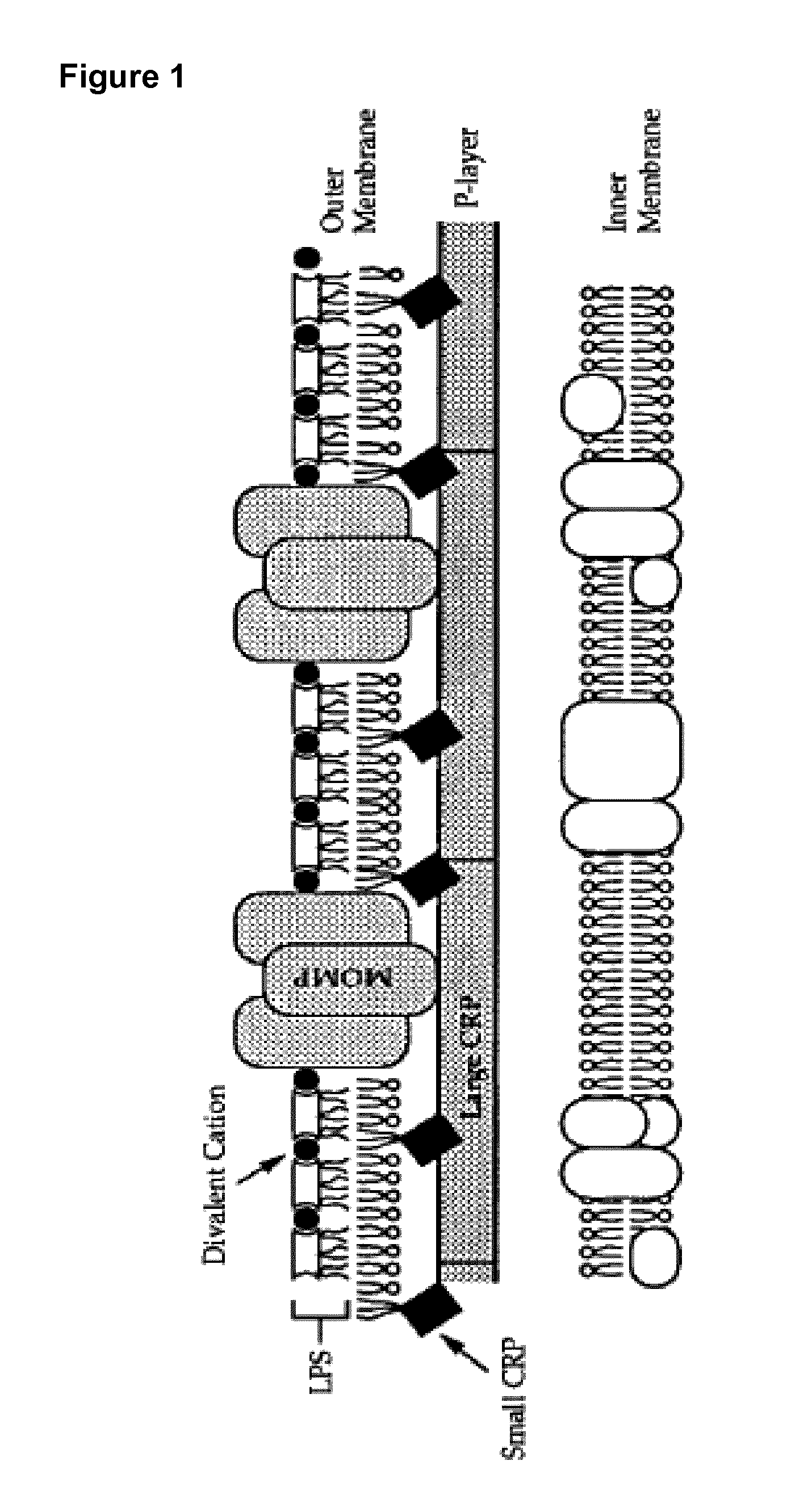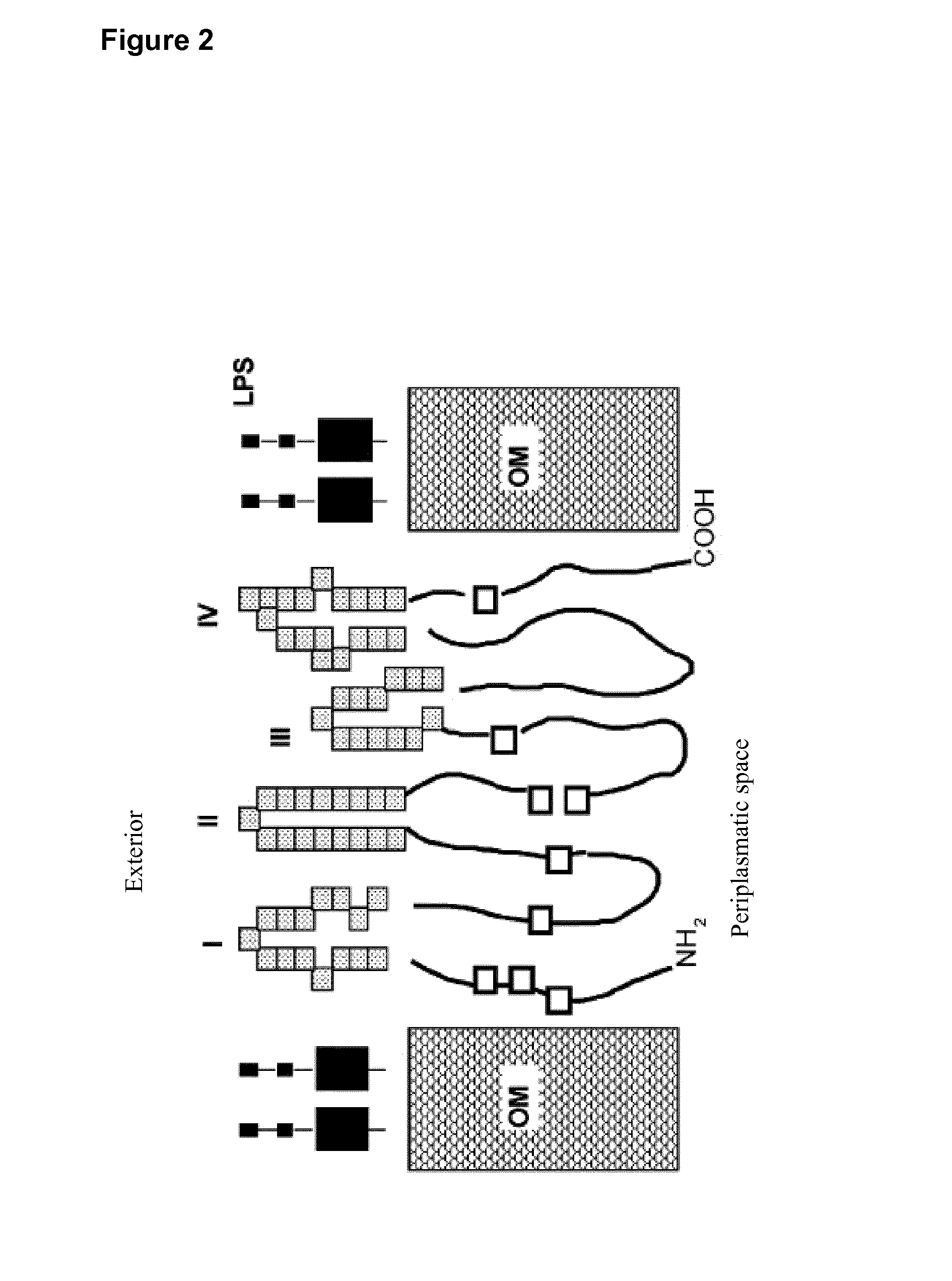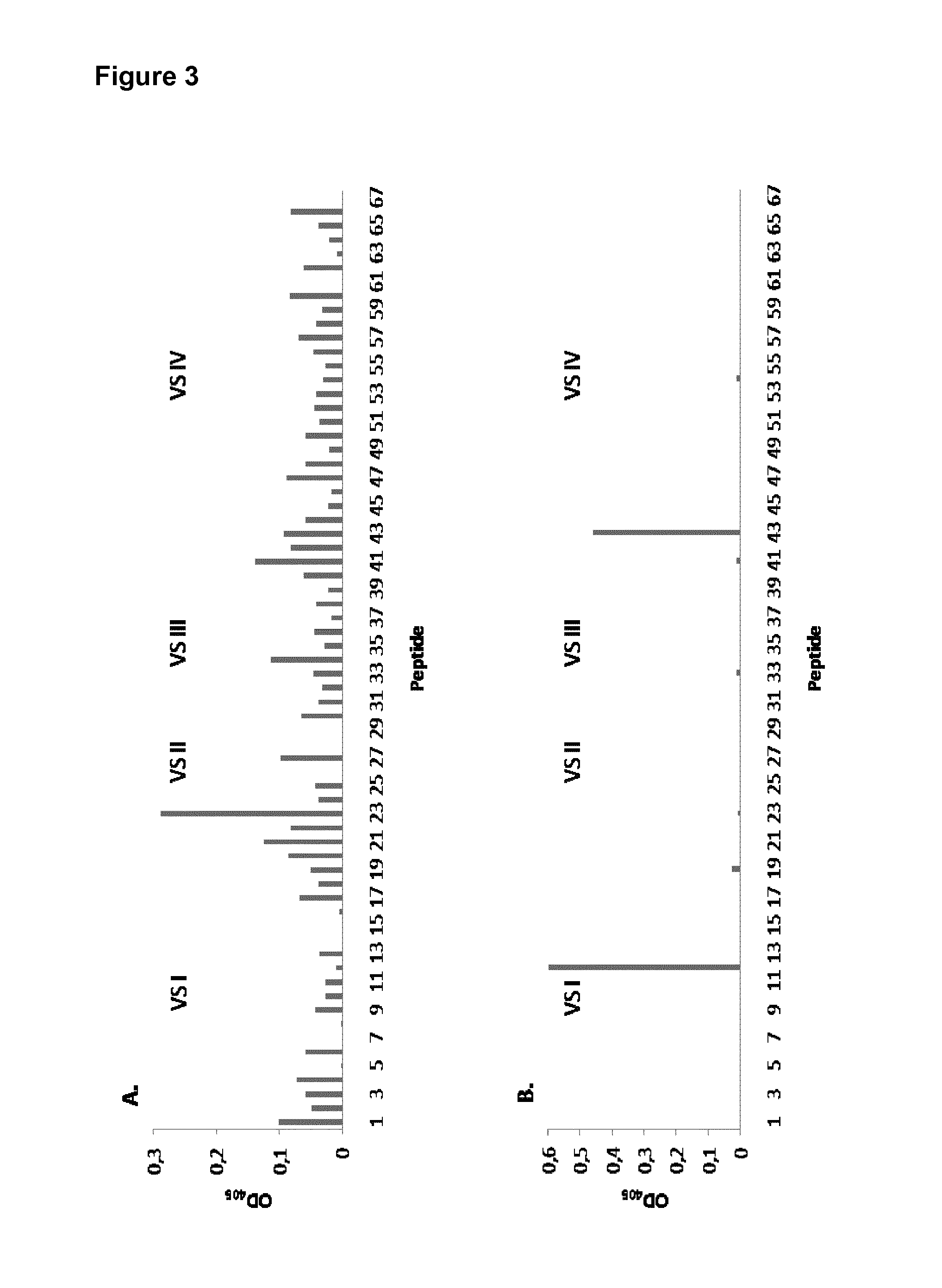Vaccines for Chlamydia
a technology of chlamydia and vaccines, applied in the field of vaccines for i>chlamydia /i>, can solve the problems of chlamydia psittaci /i>, major threat to the australian koala population, and serious threat to industrial poultry production,
- Summary
- Abstract
- Description
- Claims
- Application Information
AI Technical Summary
Benefits of technology
Problems solved by technology
Method used
Image
Examples
example 1
C. psittaci Subunit Vaccination Experiment
[0069]We performed B- and T cell epitope mapping of the C. psittaci ‘major outer membrane protein’ (MOMP) and used B- and T cell epitopes to create a C. psittaci subunit (polyepitope) vaccine, which was validated in a pre-clinical trial in specific pathogen free (SPF) chickens. C. psittaci strain 92 / 1293, isolated from a severe outbreak of respiratory disease in a commercial broiler turkey farm in the Netherlands, was used (Vanrompay et al., 1993). The strain was isolated from a pooled homogenate of the lungs, the cloacae and the spleens of diseased turkeys and was characterized as serovar D and genotype D (Geens et al., 2005). Bacteria were grown in Buffalo Green Monkey (BGM) cells as previously described (Vanrompay et al., 1992) and the titration was performed by the method of Spearman and Kaerber (Mayr et al., 1974).
[0070]For B cell epitope identification, overlapping synthetic peptides of 8 amino acids (7 amino a...
example 2
C. psittaci Recombinant MOMP Vaccination Experiment
Materials and Methods
Chlamydia psittaci Strain
[0136]C. psittaci strain 92 / 1293, isolated from a severe outbreak of respiratory disease in a commercial broiler turkey farm in the Netherlands, was used (Vanrompay et al., 1993). The strain was isolated from a pooled homogenate of the lungs, the cloacae and the spleens of diseased turkeys and was characterized as serovar D and genotype D (Geens et al., 2005). Bacteria were grown in Buffalo Green Monkey (BGM) cells as previously described (Vanrompay et al., 1992) and the titration was performed by the method of Spearman and Kaerber (Mayr et al., 1974).
Recombinant MOMP Vaccine
[0137]Recombinant MOMP was produced in COS-7 cells transfected with the pcDNA1::MOMP plasmid, as previously described (Vanrompay et al., 1998). The plasmid contained the full-length ompA gene of C. psittaci strain 92 / 1293. After harvesting the recombinant MOMP (rMOMP), the protein concentration was determined using t...
PUM
| Property | Measurement | Unit |
|---|---|---|
| time | aaaaa | aaaaa |
| particle size | aaaaa | aaaaa |
| pH | aaaaa | aaaaa |
Abstract
Description
Claims
Application Information
 Login to View More
Login to View More - R&D
- Intellectual Property
- Life Sciences
- Materials
- Tech Scout
- Unparalleled Data Quality
- Higher Quality Content
- 60% Fewer Hallucinations
Browse by: Latest US Patents, China's latest patents, Technical Efficacy Thesaurus, Application Domain, Technology Topic, Popular Technical Reports.
© 2025 PatSnap. All rights reserved.Legal|Privacy policy|Modern Slavery Act Transparency Statement|Sitemap|About US| Contact US: help@patsnap.com



